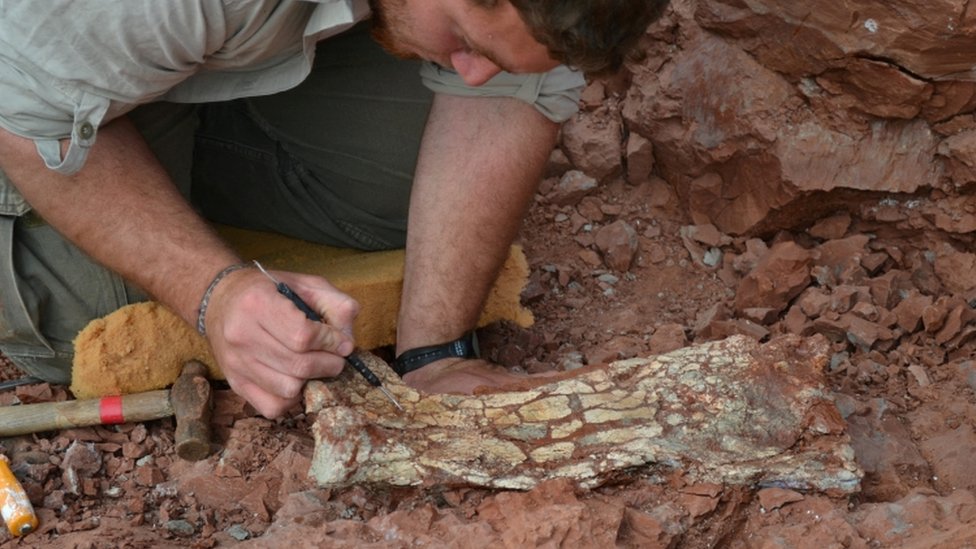The Death Dragon, as scientists call it, hunted in Earth’s skies about 86 million years ago.
When fully extended, its wingspan is nine meters from one end to the other.
The sheer size of the predator provides a “terrifying picture”, the scientists behind the discovery told the BBC.
“This species is almost as tall as a giraffe,” says project leader Leonardo Ortiz, with a wingspan that “challenges the boundaries of our biological understanding”.
Read also:
The bodies of these animals have been preserved in the rocks of the Andes mountains for 86 million years, which means that these winged creatures lived with the dinosaurs.
Prof. Ortiz was one of the paleontologists who originally discovered the reptile’s fossil during excavations in Argentina in 2012.
He chose the species name Thanatosdrakon amaru because the name combines the Greek words “death” and “dragon”.
“I think it’s the right name,” said Prof. Ortiz in an interview. “This is a death dragon.”
The reptile is believed to have been one of the first predators to use their wings for hunting — flying through prehistoric Earth’s skies before birds evolved.
Nevertheless, Prof. Ortiz told the BBC that these hunting animals are likely to spend a lot of time on land.
The lifestyle of this creature in prehistoric times is not widely known, said Prof. Ortiz, however, the fact that two specimens of different sizes were found together is evidence that these predators lived in groups.
This monstrous reptile lived about 20 million years before the asteroid hit Earth in a catastrophic extinction event, which wiped out three-quarters of animal and plant life, and marked the end of the Cretaceous Period.
 Reuters
ReutersIn 2017, a much older pterosaur fossil, dating back 170 years in the Jurassic period, was discovered on the Scottish Island of Skye. The creature has a wingspan of 2.5 meters.
–


